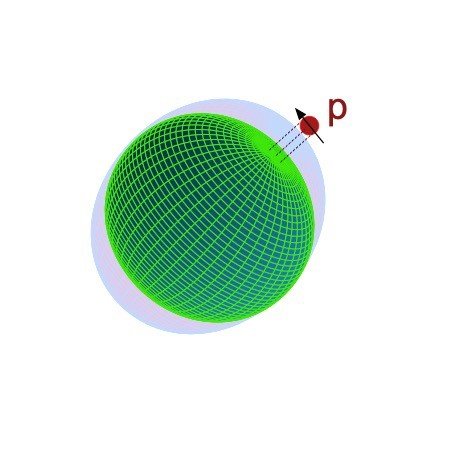Graphene and other single-atom-thick substances are a category of wonder materials, with researchers the world over investigating their electronic properties for potential applications in technologies as diverse as solar cells, novel semiconductors, sensors, and energy storage. The greatest challenge for…
Tag: Atomic Physics

Timekeeping theory combines quantum clocks and Einstein’s relativity
A phenomenon of quantum mechanics known as superposition can impact timekeeping in high-precision clocks, according to a theoretical study from Dartmouth College, Saint Anselm College and Santa Clara University.
Timekeeping theory combines quantum clocks and Einstein’s relativity
Research reveals new time dilation phenomenon
Highly selective membranes
Researchers discover how water can affect its own filtration
Scientists discover unusual materials properties at ultrahigh pressure
An international team of scientists from NUST MISIS (Russia), Linköping University (Sweden) and University of Bayreuth (Germany) found that, contrary to the usual physical and chemical laws, the structure of some materials does not condense at ultrahigh pressures. Actually, it…
Russian scientists suggested a transfer to safe nuclear energy
Scientists from Far Eastern Federal University (FEFU), Ozersk Technological Institute, and the Russian Academy of Sciences have improved a processing technology of a monazite concentrate which is a mineral raw material employed as a source of rare earth elements and…
Zeptoseconds: new world record in short time measurement
Physicists from Frankfurt, Hamburg and Berlin track the propagation of light in a molecule
Quantum engines with entanglement as fuel?
University of Rochester researcher receives $1 million grant to study quantum thermodynamics
A billion tiny pendulums could detect the universe’s missing mass
Researchers have proposed a novel method for finding dark matter
An innovative method to tune lasers toward infrared wavelengths
Researchers at Institut national de la recherche scientifique (INRS) have discovered a cost-effective way to tune the spectrum of a laser to the infrared
Quantum physics: Physicists successfully carry out controlled transport of stored light
Patrick Windpassinger and his team demonstrate how light stored in a cloud of ultra-cold atoms can be transported by means of an optical conveyor belt
Scientists find upper limit for the speed of sound
A research collaboration between Queen Mary University of London, the University of Cambridge and the Institute for High Pressure Physics in Troitsk has discovered the fastest possible speed of sound. The result- about 36 km per second – is around…
An electrical trigger fires single, identical photons
The precisely controlled photon source, made from an atomically thin semiconducting material, could aid the development of advanced quantum communication
Silence, please: UNSW scientists create quietest semiconductor quantum bits on record
A team led by 2018 Australian of the Year Professor Michelle Simmons has taken another important step forward in the development of a silicon quantum computer
Diamonds are a quantum scientist’s best friend
The discovery of triplet spin superconductivity in diamonds has the potential to revolutionise the high-tech industry.
Could megatesla magnetic fields be realized on Earth?
A team of researchers led by Osaka University discovers “microtube implosion,” a novel mechanism that demonstrates the generation of megatesla-order magnetic fields
Hunting for the lowest known nuclear-excited state
Measurements in thorium-229 take a step towards the direct laser excitation of an atomic nucleus in this unique isotope
Scientists find evidence of exotic state of matter in candidate material for quantum computers
Using a novel technique, scientists working at the Florida State University-headquartered National High Magnetic Field Laboratory have found evidence for a quantum spin liquid, a state of matter that is promising as a building block for the quantum computers of…
Advancing multiprincipal alloys
Team of materials researchers explores new domains of the compositionally complex metals
Physicists build circuit that generates clean, limitless power from graphene
Researchers harnessed the atomic motion of graphene to generate an electrical current that could lead to a chip to replace batteries.
Timing the life of antimatter particles may lead to better cancer treatment
Japanese team aims to detect oxygen concentration in tumors using upgraded medical imaging scan
Earthquake forecasting clues unearthed in strange precariously balanced rocks
Precariously balanced rocks (PBRs) are formations found throughout the world where a slender boulder is balanced precariously on a pedestal boulder. They form as blocks preserved on cliffs, or when softer rocks erode and leave the harder rocks behind. They…
Ultrasensitive microwave detector developed
A joint international research team from POSTECH of South Korea, Raytheon BBN Technologies, Harvard University, and Massachusetts Institute of Technology in the U.S., Barcelona Institute of Science and Technology in Spain, and the National Institute for Materials Science in Japan…

Novel Measurement Finds Collective Motion and Deformation in Atomic Nuclei
Atomic nuclei exhibit increased stability when they have certain numbers of protons or neutrons. Proton-neutron pairs in these nuclei favor spherical shapes. However, deformed shapes can develop when the long-range part of the proton-neutron interaction overcomes the short-range interaction.
Stellar explosion in Earth’s proximity
Discovery of iron-60 and manganese-53 substantiates supernova 2.5 million years ago
Scientists studied nanoparticles embedded in silver-ion-exchanged glasses
Researchers have registered the formation of silver nanoparticles in an ion-exchanged glass as a result of infrared laser irradiation.
Why disordered light-harvesting systems produce ordered outcomes
Scientists typically prefer to work with ordered systems. However, a diverse team of physicists and biophysicists from the University of Groningen found that individual light-harvesting nanotubes with disordered molecular structures still transport light energy in the same way. By combining…
Helium, a little atom for big physics
Helium atom precision measurements and calculations have a history of nearly a century. In the 1960s, theorists discovered that the fine-structure split (23P0-23P2) of the 23P energy level of helium is the best atomic system for measuring the fine structure…
New extreme ultraviolet facility opens for use
A new machine to probe the ultrafast motion of matter is the first of its kind
Metal wires of carbon complete toolbox for carbon-based computers
Metallic carbon circuit element enables work on faster, efficient carbon-based transistors
The return of the spin echo
A research team from Garching and Vienna discovered a remarkable echo effect – it offers exciting new possibilities for working with quantum information
Controlling ultrastrong light-matter coupling at room temperature
Physicists at Chalmers University of Technology in Sweden, together with colleagues in Russia and Poland, have managed to achieve ultrastrong coupling between light and matter at room temperature. The discovery is of importance for fundamental research and might pave the…
Scientists develop forecasting technique that could help advance quest for fusion energy
Bringing the power of the sun to Earth requires sound theory, good engineering, and a little finesse. The process entails trapping charged, ultra-hot gas known as plasma so its particles can fuse and release enormous amounts of energy. The most…
Extra stability for magnetic knots
Scientists from Kiel find a new mechanism for the stabilization of skyrmions
Zhao studying strongly interacting quantum gases
Erhai Zhao, Associate Professor, Department of Physics and Astronomy, is developing numerical algorithms to describe and understand superfluidity and magnetic orders in repulsively interacting Fermi gases of ultracold atoms in optical lattices. He is also employing machine learning techniques to…
Physics: Collision movie with upgraded particle detector at CERN
Physicists at Goethe University lead one of the technical refurbishments of “ALICE” for researching quark-gluon plasma
Skoltech research puts exciton-polaritons in their place with new artificial laser-built lattices
Researchers at the Hybrid Photonics Laboratories in Skoltech and Southampton (UK), in collaboration with Lancaster University (UK), have demonstrated a new optical method to synthesize artificial solid-state crystal structures for cavity-polaritons using only laser light. The results could lead to…
Microsoft and University of Copenhagen collaboration yields promising material for quantum computing
Researchers at the Microsoft Quantum Materials Lab and the University of Copenhagen, working closely together, have succeeded in realizing an important and promising material for use in a future quantum computer. For this end, the researchers have to create materials…
CCNY engineer Xi Chen and partners create new shape-changing crystals
Imagine harnessing evaporation as a source of energy or developing next generation actuators and artificial muscles for a broad array of applications. These are the new possibilities with the creation by an international team of researchers, led by The City…
Infinite chains of hydrogen atoms have surprising properties, including a metallic phase
Scientists with the Flatiron Institute and the Simons Collaboration on the Many Electron Problem combined cutting-edge computational methods to probe an endless line of protons surrounded by electrons
Physicists “trick” photons into behaving like electrons using a “synthetic” magnetic field
Scientists have discovered an elegant way of manipulating light using a “synthetic” Lorentz force — which in nature is responsible for many fascinating phenomena including the Aurora Borealis. A team of theoretical physicists from the University of Exeter has pioneered…
Magnetic field with the edge!
A team of Indian and Japanese physicists have overturned the six-decade old notion that the giant magnetic field in a high intensity laser produced plasma evolves from the small, nanometre scale in the bulk plasma [1]. They show that instead…
Harvard team uses laser to cool polyatomic molecule
Harvard researchers become first to cool polyatomic molecule using light
Quantum shake
Physicists use classical concepts to decipher strange quantum behaviors in an ultracold gas
AI used to show how hydrogen becomes a metal inside giant planets
Dense metallic hydrogen – a phase of hydrogen which behaves like an electrical conductor – makes up the interior of giant planets, but it is difficult to study and poorly understood. By combining artificial intelligence and quantum mechanics, researchers have…
UMass Lowell prof to present TEDx talk on ‘Breaking Barriers’
Speaker series features prominent women in range of fields
UArizona collaborates on $115M effort to build quantum computer
Three University of Arizona engineers are involved in the Superconducting Quantum Materials and Systems Center, part of a $625 million federal program to foster quantum innovation in the United States
A molecular approach to quantum computing
New research demonstrates how the use of molecules in quantum computing leads to fewer errors
Giant leap for molecular measurements
A new tool to analyze molecules is 100 times faster than previous methods
Manganese single-atom catalyst boosts performance of electrochemical CO2 Reduction
Electrochemical CO 2 reduction reaction (CO 2 RR) is a promising approach to convert CO 2 into useful chemicals. A research team led by Prof. ZHANG Suojiang from the Institute of Process Engineering (IPE) of the Chinese Academy of Sciences…